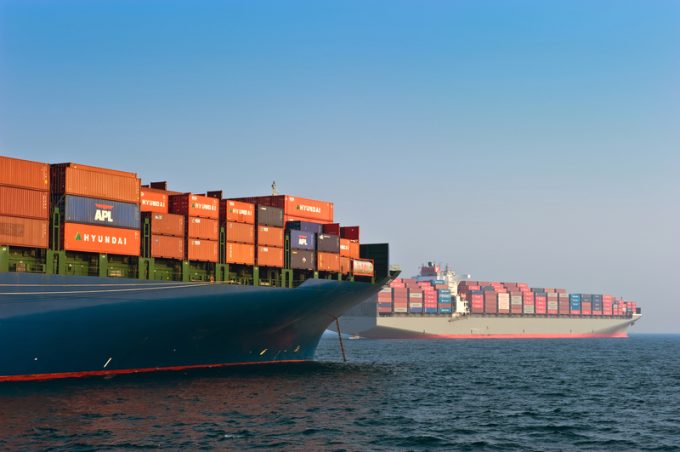Nickels and dimes: Wilson Sons 10% down on MSC buy. Why?
M&A desk musings
GM: RAISING THE ROOF GGM: IN FULL THROTTLE GZIM: MAERSK BOOST KNIN: READ-ACROSSMAERSK: NOT ENOUGHMAERSK: GUIDANCE UPGRADEZIM: ROLLERCOASTERCAT: HEAVY DUTYMAERSK: CATCHING UP PG: DESTOCKING PATTERNSPG: HEALTH CHECKWTC: THE FALLGXO: DEFENSIVE FWRD: RALLYING ON TAKEOVER TALKODFL: STEADY YIELDVW: NEW MODEL NEEDEDWTC: TAKING PROFIT
GM: RAISING THE ROOF GGM: IN FULL THROTTLE GZIM: MAERSK BOOST KNIN: READ-ACROSSMAERSK: NOT ENOUGHMAERSK: GUIDANCE UPGRADEZIM: ROLLERCOASTERCAT: HEAVY DUTYMAERSK: CATCHING UP PG: DESTOCKING PATTERNSPG: HEALTH CHECKWTC: THE FALLGXO: DEFENSIVE FWRD: RALLYING ON TAKEOVER TALKODFL: STEADY YIELDVW: NEW MODEL NEEDEDWTC: TAKING PROFIT

Containership charter rates are at a 30-month high on the back of strong demand, and Alphaliner is predicting an “impending capacity crunch”.
This will come in most vessel sizes as carriers return to full sailings after the Chinese new year, it says.
The container lines are preparing to launch a number of new services, which the consultant said was “expected to take out most of the idle capacity in the coming month”.
Despite a slight increase due to void sailings around the Chinese New Year, the number of container vessels in hot or cold lay-up remains at an historical low of just 125, with capacity of 626,996 teu, representing 2.9% of the global cellular fleet.
Owners that had all but given up on finding profitable employment for their ships are now reactivating and crewing the vessels as the market continues to improve and charterers look to fix longer-term.
This has all but stymied the boxship demolition market, with only 13 ships sent to the scrapyard this year, compared with 63 by the same time in 2017.
“The impending capacity crunch is already starting to be felt in the charter market, with charter rates rising to a 30-month high on the back of the strong demand for fresh tonnage in April,” said Alphaliner.
It said the supply of tonnage remained low for most vessel sizes and was “getting even tighter for certain ship types”.
It noted: “Charter rates are increasingly profiting from the improving market fundamentals, with certain vessels being fixed at levels unseen for many years.”
Indeed, charter rate indices have recorded a sharp spike in daily hire rates in all sectors since the beginning of the year; some sizes have seen rates soar by 20% between February and March, a period usually quiet for fixtures.
One London broker told The Loadstar this week he had been unsuccessfully looking for an open panamax ship for several weeks, his carrier client “prepared to pay top dollar” and commit to a long-term charter with options.
He added that the carrier was “becoming concerned at the development of the market” when, at the same time, spot rates on the major routes were still falling four weeks after the new year holiday.
Container lines rely on the charter market for a large percentage of their fleets, with the likes of Cosco and MSC chartering-in 70% and 66% respectively of their capacity.
Hitherto, carriers have been able to turn the supply tap off and on to meet peaks and troughs in demand by hiring and off-hiring tonnage – shipowners being relieved to see their ships employed, even at breakeven daily hire rates.
Maersk Line has said it had been able to use the soft charter market as a “tool” to adjust its capacity to cover demand volatility. The Danish carrier pointed to the flexibility of its 463-strong chartered fleet, out of its total of 769 vessels in operation, many of which it said were fixed on a short-term basis with flexible options.
But with the charter market having turned, Maersk and its peers will see their vessel operating budgets stretched significantly.
Comment on this article